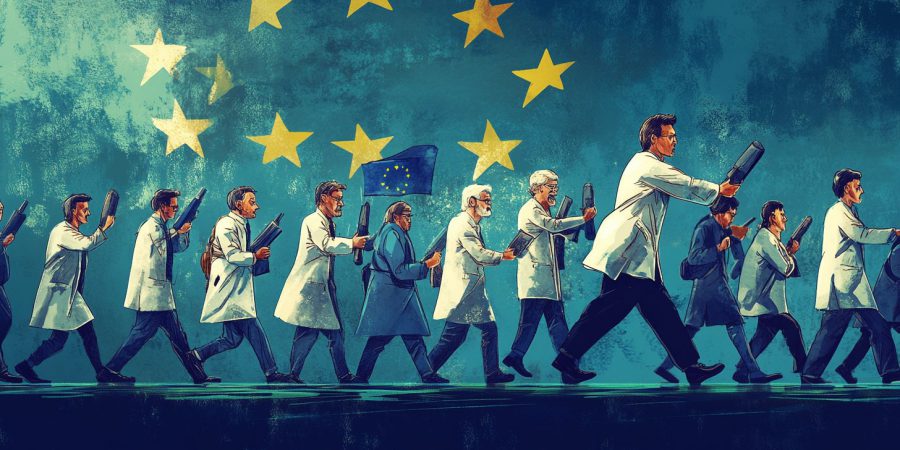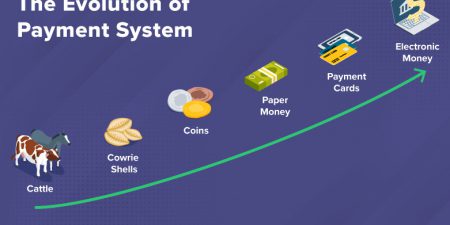Introduction
In the heart of Paris, on a balmy August evening in 2024, a private jet touched down at Le Bourget Airport. As the door opened and passengers began to disembark, French authorities moved in with swift precision. Their target? Pavel Durov, the enigmatic founder of Telegram, one of the world’s most popular messaging apps. Within moments, the billionaire entrepreneur was in custody, setting off a chain of events that would send shockwaves through the digital world and ignite a firestorm of debate about the future of free speech in Europe. This arrest, dramatic as it was, represents merely the tip of an iceberg – a visible manifestation of a much larger, more complex struggle that has been brewing beneath the surface of our digital society for years. It’s a struggle that pits the fundamental human right to privacy against the pressing needs of public safety, the power of governments against the reach of global tech companies, and the ideals of a free and open internet against the realities of a world grappling with misinformation, cybercrime, and digital extremism.
As we delve into this labyrinthine issue, we must keep in mind that what’s at stake is not just the fate of one man or one company, but the very nature of communication in the 21st century. The decisions made in the coming months and years will shape the digital landscape for generations to come, determining whether the internet remains a bastion of free expression or becomes a tool for unprecedented surveillance and control. Consider, for a moment, the case of OpenAI’s Advanced Voice Mode – a cutting-edge feature that promises to revolutionize how we interact with artificial intelligence. This technology, capable of understanding and responding to human emotions, stands poised to transform everything from customer service to mental health support. Yet, as of 2024, it remains unavailable throughout the European Union, barred by regulations that its creators argue are overly broad and shortsighted. Meanwhile, in the realm of biotechnology, a chorus of Nobel laureates has raised their voices, pleading with EU lawmakers to relax rules on genetic modification. Their argument? That in the face of a growing climate crisis, we simply don’t have the luxury of time to rely on traditional crop breeding methods. The potential to create drought-resistant crops or plants that require fewer pesticides hangs in the balance, caught between the promise of scientific progress and the caution of regulators.
These cases – Durov’s arrest, the AI voice ban, the gene editing debate – are not isolated incidents. They are symptoms of a deeper, more pervasive tension that has come to define the relationship between technology and governance in the 21st century. It’s a tension that forces us to confront uncomfortable questions about the nature of progress, the limits of state power, and the very meaning of freedom in a digital age.
As we embark on this exploration, we must ask ourselves: Are the regulations that govern our digital lives truly serving their intended purpose, or have they become relics of a bygone era, desperately clinging to notions of control that no longer apply in our interconnected world? Is the European Union, long considered a beacon of progressive values and human rights, inadvertently stifling the very innovations that could solve some of humanity’s most pressing challenges? To answer these questions, we must journey to the heart of power in Brussels, to the front lines of technological innovation in Silicon Valley, and to the virtual realms where a new generation of global citizens is forging connections and communities that transcend traditional notions of borders and nationalities. We must examine the hidden currents of power, control, and cultural inertia that shape our policies and our perceptions. And perhaps most importantly, we must dare to imagine a different future – one where the ingenuity of human creativity is not constrained by the fears of the past, but empowered to tackle the challenges of tomorrow. For in this rapidly evolving landscape, the greatest risk may not be in embracing change, but in resisting it.
Join us as we navigate the treacherous waters of regulation and innovation, of freedom and control, in search of a path forward that honors both our values and our potential. The journey ahead is complex, but the stakes could not be higher. For in the end, the choices we make today will determine not just the future of technology, but the very shape of human society in the digital age.
II. The Illusion of Freedom: EU’s Regulatory Overreach
As the digital revolution unfolds, reshaping every aspect of our lives from communication to commerce, the European Union stands at a crossroads. On one side lies the promise of technological progress, with its potential to solve age-old problems and unlock new realms of human potential. On the other, the specter of unchecked power and societal upheaval. In its attempt to navigate this treacherous terrain, the EU has increasingly turned to regulation as its compass and shield. Yet, as we peel back the layers of these regulations, a troubling pattern emerges. What was once hailed as a bastion of individual rights and freedoms is now being perceived by many as an increasingly stifling bureaucracy, one that threatens to smother the very innovation it claims to protect. The EU’s regulatory approach, while born from legitimate concerns, has begun to cast a long shadow over the digital landscape, creating what some are calling an illusion of freedom – a mirage of choice and autonomy that masks a reality of restriction and control.
Consider the irony: in a continent that once tore down walls to unite its people, new barriers are being erected in the digital realm. These are not physical walls of concrete and barbed wire, but invisible fences of legislation and regulation that are proving just as effective at dividing and restricting. They separate European citizens from global innovations, entrepreneurs from potential markets, and scientists from groundbreaking discoveries. This regulatory overreach manifests in myriad ways, each more concerning than the last. From the banning of cutting-edge AI technologies to the criminalization of encryption, from the stifling of genetic research to the hobbling of social media platforms, the EU’s approach increasingly resembles that of a overprotective parent, sheltering its citizens from perceived dangers at the cost of their growth and autonomy. But perhaps the most insidious aspect of this regulatory regime is how it has been framed and sold to the public. Under the banner of protection – be it data protection, consumer protection, or protection of European values – these regulations have been presented as safeguards of freedom rather than its antithesis. It’s a masterclass in doublespeak, where restrictions are freedoms, where lack of choice is consumer empowerment, and where falling behind in the global tech race is proudly proclaimed as taking the moral high ground.
As we delve deeper into specific cases – the saga of OpenAI’s Advanced Voice Mode, the arrest of Telegram’s creator Pavel Durov, and the stifling of genetic modification research – we’ll see how this regulatory overreach plays out in real-time, with real consequences. We’ll explore how these policies, often crafted with the best intentions, can lead to outcomes that are not just counterproductive, but potentially dangerous in a world where technological progress is increasingly synonymous with societal resilience and economic prosperity. Moreover, we’ll examine how this regulatory approach is creating a widening gap between the EU and the rest of the world. As other nations race ahead in AI, biotechnology, and digital innovation, Europe risks being left behind, clinging to an outdated notion of control in a world that has long since outgrown such constraints.
The question we must grapple with is this: In its quest to protect its citizens from the perceived dangers of unchecked technological progress, is the EU inadvertently robbing them of the very freedoms and opportunities it seeks to preserve? And if so, what price will Europe – and indeed, the world – pay for this illusion of freedom?
A. OpenAI’s Advanced Voice Mode: The Silenced Revolution
In the annals of technological progress, certain innovations stand out as watershed moments – inventions that promise to fundamentally alter the way we interact with the world around us. OpenAI’s Advanced Voice Mode, unveiled in the summer of 2024, was poised to be one such breakthrough. This wasn’t just another incremental improvement in voice recognition technology; it was a quantum leap forward in human-AI interaction, one that blurred the lines between artificial and human intelligence in ways both exhilarating and unsettling.

Imagine, for a moment, an AI assistant that doesn’t just understand your words, but grasps the nuances of your tone, the subtleties of your emotions, and the context of your cultural background. An AI that can engage in natural, flowing conversation, complete with the ability to interrupt, clarify, and even express empathy. This was the promise of Advanced Voice Mode – a digital companion that could serve as translator, therapist, teacher, and creative muse all rolled into one. For users outside the European Union, this promise quickly became reality. Stories flooded social media of people forming deep, meaningful connections with their AI assistants. Language learners reported unprecedented progress in mastering new tongues, thanks to AI companions that could adapt their speech patterns in real-time. Mental health professionals spoke of breakthroughs with patients who found it easier to open up to an empathetic AI than to human therapists. The technology was even being piloted in crisis hotlines, providing immediate, 24/7 support to those in emotional distress. But for the 450 million citizens of the European Union, Advanced Voice Mode remained tantalizingly out of reach. The reason? A single clause in the EU’s sweeping Artificial Intelligence Act, prohibiting AI systems from inferring the emotions of natural persons. This regulation, ostensibly designed to protect citizens from manipulation and privacy invasion, effectively slammed the door on one of the most promising technological advancements of the decade.

Maybe EU legislators have fears of a slightly different nature?
The irony of the situation was not lost on European tech enthusiasts and entrepreneurs. Here was a technology that could potentially revolutionize mental health support, education, and customer service – all areas where the EU has historically prided itself on being at the forefront. Yet, due to a regulation that many argued was overly broad and short-sighted, Europe found itself lagging behind the rest of the world. OpenAI’s attempts to negotiate with EU regulators proved fruitless. The company argued that Advanced Voice Mode’s emotion recognition capabilities were a feature, not a bug – a crucial component in creating more natural, helpful, and ultimately more human AI interactions. They pointed out that the technology could be particularly beneficial for users with conditions like autism, who often struggle to interpret emotional cues in human interactions. But the regulators remained unmoved, insisting that the potential for misuse and manipulation was too great.
As months passed, the consequences of this decision began to ripple through the European tech ecosystem. Start-ups that had been poised to build innovative applications on top of Advanced Voice Mode were forced to shelve their plans or relocate outside the EU. European universities found themselves at a disadvantage in AI research, unable to work with the most advanced conversational AI tools. Even large corporations began to grumble about the competitive disadvantage they faced compared to their non-EU counterparts.
Perhaps most poignantly, stories emerged of EU citizens going to extreme lengths to access the technology. Some set up elaborate VPN systems to fool the geolocation checks. Others made plans to travel to the UK or Switzerland – non-EU countries where Advanced Voice Mode was available – just to experience the technology firsthand. A black market even emerged for OpenAI accounts registered outside the EU, with people willing to pay premium prices for access to what they saw as a transformative technology. The Advanced Voice Mode debacle became a rallying cry for those who argued that the EU’s approach to tech regulation was fundamentally flawed. Critics pointed out that by trying to protect its citizens from potential harm, the EU was instead infantilizing them, denying them agency and the ability to make informed choices about the technology they use. Moreover, the ban highlighted a growing disconnect between EU regulators and the realities of global technological progress. In a world where AI development was proceeding at breakneck speed, the EU’s ponderous regulatory approach seemed increasingly out of touch. While regulators deliberated and debated, the rest of the world was racing ahead, embracing new technologies and reaping their benefits.
As we stand at this crossroads, the case of OpenAI’s Advanced Voice Mode serves as a stark reminder of the unintended consequences of well-meaning regulations. It forces us to grapple with difficult questions: How do we balance innovation with protection? How can regulations keep pace with rapidly evolving technologies? And perhaps most crucially, in our quest to shield ourselves from potential harm, are we risking a far greater danger – that of being left behind in the global march of progress?
The silence of Advanced Voice Mode in Europe speaks volumes about these challenges. It’s a silence that echoes through research labs, startup incubators, and living rooms across the continent – a reminder of what could have been, and a warning of what might be lost if we cannot find a better way forward.
B. The Arrest of Pavel Durov: When Privacy Becomes a Crime
On that fateful August evening in 2024, as Pavel Durov stepped off his private jet onto French soil, he couldn’t have known that he was walking into a storm that would reshape the digital landscape. The Russian-born entrepreneur, often dubbed the “Mark Zuckerberg of Russia,” had long been a thorn in the side of authorities worldwide. His creation, Telegram, had become more than just a messaging app; it was a symbol of digital freedom, a bastion of privacy in an increasingly surveilled world. Durov’s arrest sent shockwaves through the tech community and beyond. The charges leveled against him read like a dystopian novel: complicity in drug trafficking, dissemination of child pornography, and the nebulous crime of “unlawfully providing cryptology services.” But to many observers, the real crime Durov had committed was far simpler: he had dared to create a communication platform that governments couldn’t control.

The irony was palpable. France, a nation that prides itself on being the birthplace of human rights, was now detaining a man for essentially upholding one of the most fundamental rights of the digital age: the right to private communication. The move laid bare the growing tension between state power and individual liberty in the digital realm, a conflict that had been simmering beneath the surface for years.
Telegram’s journey to this point had been a tumultuous one. Founded in 2013, the app had quickly gained popularity for its strong encryption and commitment to user privacy. Unlike other messaging platforms that had buckled under government pressure to provide backdoors or hand over user data, Telegram had stood firm. Durov himself had famously stated, “We won’t surrender our users’ data even if confronted by a nuclear attack. This steadfast commitment to privacy had made Telegram a haven for all sorts of groups – political dissidents organizing against authoritarian regimes, journalists protecting their sources, and yes, sometimes criminals coordinating illegal activities. It was this last group that governments often pointed to as justification for their attempts to control or ban the app.
But Durov’s supporters argued that this was merely a pretext. The real issue, they contended, was that Telegram represented a threat to the monopoly on information that governments had long enjoyed. In an age where data is power, an truly private communication channel was anathema to those accustomed to unfettered access to citizens’ conversations.
One major doubt always remained, though – why Telegram always required users to provide their mobile phone numbers? Similarly to Signal which has been since long suspected to be a honeypot established by agencies. Since when does end-to-end encryption and thus cryptography require a phone numer book regarding all of its users? While Signal claimed this to be for user convenience , why not make the phone numer collection an opt-in? If users are after privacy it’s logical they not necessarily are willing to share they mobile phone numbers which in EU and other jurisdictions have been forcefully assigned to one’s identity, by law. Maybe just maybe this allows agencies to close in on those who have something to hide? We all need to remember that even though Signal or Telegram might have offered end-to-end encryption, the keystrokes and letters always land in the virtual keyboard of the operating system the app runs atop of first. If an agency can tap into that keyboard the open source or not end to end encryption used by Signal or Telegram does not matter at all.
The arrest in Paris was not an isolated incident, but rather the culmination of a long-running campaign against Telegram and similar privacy-focused platforms. In the years leading up to 2024, we had seen a steady escalation of measures against such services:
- In 2022, the EU had passed the Digital Services Act, which imposed strict content moderation requirements on digital platforms. Telegram’s refusal to comply had led to hefty fines and threats of bans in several EU countries.
- The following year, the UK’s Online Safety Bill had come into effect, requiring platforms to weaken their encryption to allow for monitoring of potentially harmful content. Again, Telegram had refused.
- By 2024, a coalition of countries, including the US, UK, and several EU member states, had begun pushing for a global treaty that would effectively outlaw end-to-end encryption in consumer applications.
Durov’s arrest was the logical endpoint of this trajectory – a clear message that in the eyes of many governments, providing unbreakable privacy was itself a form of criminality.
The aftermath of the arrest was chaotic. Telegram users worldwide rallied in support of Durov, organizing protests and launching social media campaigns. The hashtag #FreeDurov trended globally for weeks. More ominously, there were reports of retaliatory cyberattacks against French government websites, allegedly carried out by hackers sympathetic to Durov’s cause. But perhaps the most significant consequence was the chilling effect the arrest had on the tech industry as a whole. Entrepreneurs and developers watched the Durov saga unfold with growing unease. The message was clear: innovate at your own risk. If your creation becomes too successful, too disruptive to the status quo, you might find yourself in the crosshairs of government prosecutors. This chilling effect extended beyond just privacy-focused applications. Any technology that could potentially challenge government control – be it decentralized finance platforms, autonomous AI systems, or advanced encryption tools – suddenly seemed fraught with danger. The result was a noticeable slowdown in innovation, particularly in Europe, as investors and entrepreneurs grew wary of fields that might attract regulatory scrutiny. Moreover, Durov’s arrest highlighted the growing divide between the governing and the governed in the digital age. While politicians and bureaucrats saw Telegram as a threat to be neutralized, millions of users viewed it as an essential tool for free communication. This disconnect underscored a fundamental question: in a democracy, who gets to decide the boundaries of acceptable technology?
As Durov awaited trial in a French prison, the world watched and waited. The outcome of his case would have far-reaching implications, not just for the future of private communication, but for the very nature of innovation in the digital age. Would the arrest of Pavel Durov be remembered as the moment when European democracies decisively chose control over freedom? Or would it serve as a wake-up call, sparking a reexamination of the balance between security and liberty in the digital realm? One thing was certain: the genie of encrypted communication was out of the bottle. Even if Telegram were to be shut down, dozens of alternatives would spring up to take its place. The question was no longer whether people would have access to private communication channels, but whether such access would be a right enjoyed openly or a liberty exercised in the shadows.
As we grapple with these questions, the case of Pavel Durov stands as a stark reminder of the stakes in this ongoing battle for the soul of the internet. It forces us to confront uncomfortable truths about the limits of state power, the nature of privacy in the digital age, and the price we’re willing to pay for the illusion of security.
One thing is clear after the arrest Telegram modified its EULA to allow users to be spied upon – there’s freedom oriented telegram, no more.
C. Gene Editing Regulations: Scientific Progress in Regulatory Chains
As the digital realm grappled with the aftershocks of Pavel Durov’s arrest and the silencing of OpenAI’s Advanced Voice Mode, another battle was brewing in the laboratories and greenhouses of Europe. This was a battle not over bits and bytes, but over the very building blocks of life itself. At its heart lay a technology with the potential to revolutionize agriculture, medicine, and our very understanding of biology: gene editing.
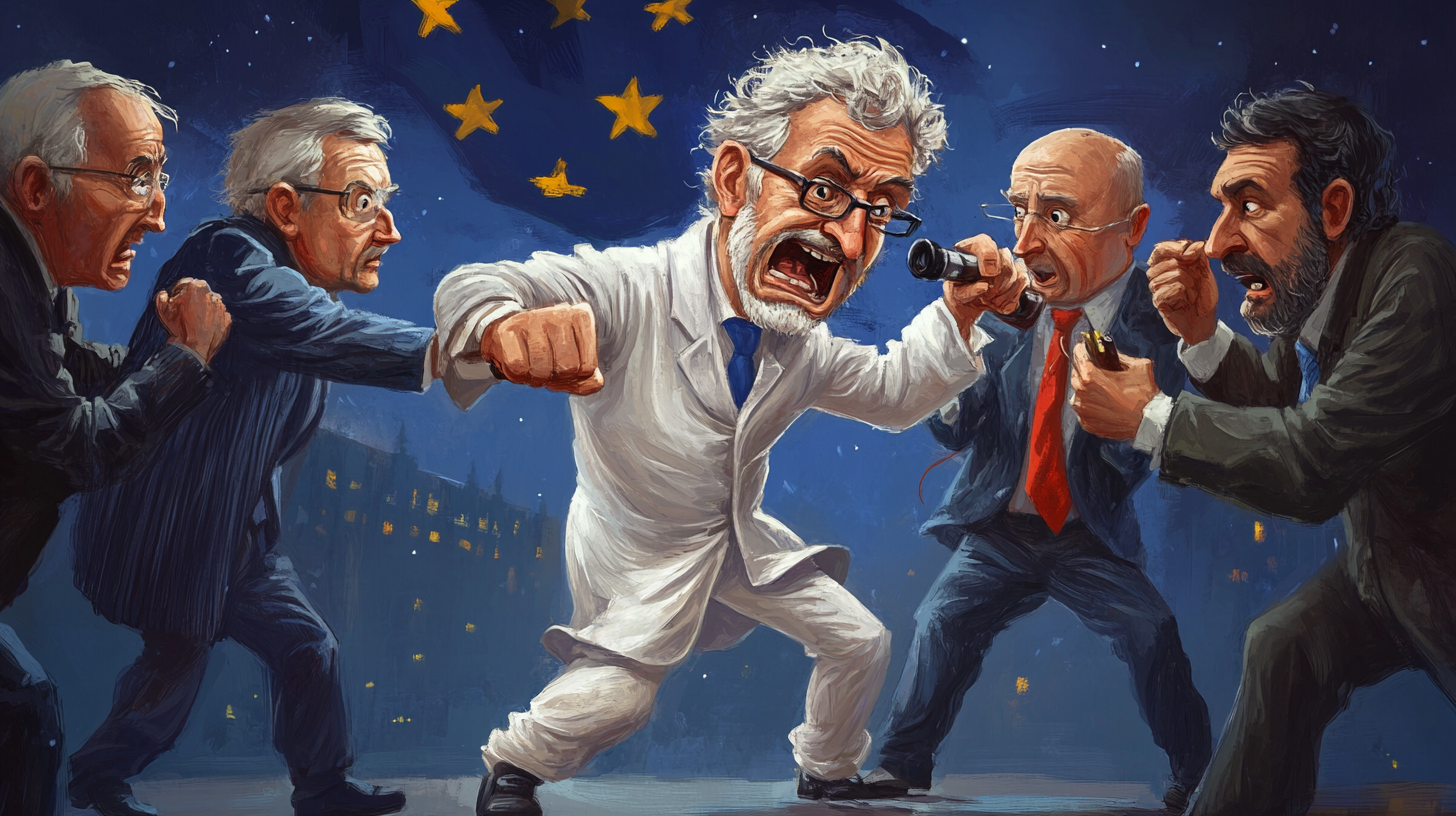
In January 2024, a group of 34 Nobel laureates did something unprecedented. They penned an open letter to the European Parliament, pleading for a relaxation of the EU’s stringent rules on genetic modification. Their message was clear and urgent: “We do not have this time in an era of climate emergency,” they wrote, arguing that traditional methods of crop breeding were simply too slow to meet the challenges posed by a rapidly changing climate. The letter sent ripples through the scientific community and beyond. Here were some of the world’s most brilliant minds, including the very scientists who had pioneered CRISPR gene-editing technology, essentially accusing the EU of hindering humanity’s ability to address existential threats. It was a damning indictment of a regulatory framework that many had long suspected was outdated and overly cautious.

To understand the full weight of this moment, we need to step back and examine the EU’s complicated history with genetic modification. Since the late 1990s, the EU had taken a notably cautious approach to GMOs (Genetically Modified Organisms), implementing some of the world’s strictest regulations on their development and use. This stance was rooted in a combination of scientific uncertainty, public skepticism, and the precautionary principle – the idea that in the face of potential harm, it’s better to err on the side of caution. While this approach had initially been lauded as responsible governance, by the 2020s it was increasingly seen as a barrier to progress. The rest of the world had moved forward with gene editing technologies, particularly in agriculture. Nations like the United States, China, and Brazil were developing crops that could withstand drought, resist pests without the need for harmful pesticides, and provide enhanced nutritional benefits. Meanwhile, European farmers and researchers found themselves shackled by regulations that treated precise gene editing techniques with the same heavy hand as older, less targeted genetic modification methods. The implications of this regulatory disparity were far-reaching. European agriculture was falling behind in terms of yield and sustainability. Promising medical treatments based on gene editing were being developed more slowly in Europe than elsewhere. Perhaps most critically, as climate change began to wreak havoc on traditional growing regions, Europe found itself ill-equipped to develop the resilient crop varieties needed to ensure food security in a warming world.
It wasn’t just food production at stake. The potential applications of gene editing in medicine were equally revolutionary. CRISPR technology held the promise of curing genetic diseases, enhancing cancer treatments, and even extending human longevity. Yet here too, European researchers found themselves constrained by regulations that hadn’t kept pace with the technology’s rapid advancement.
The Nobel laureates’ letter brought these tensions to a head. It forced a public reckoning with a question that had long been simmering in scientific circles: Was the EU’s precautionary approach to gene editing actually causing more harm than it prevented?
Proponents of stricter regulation argued that the potential risks of gene editing – from unintended ecological consequences to the ethical implications of “designer babies” – were too great to ignore. They pointed to the EU’s leadership in environmental protection and argued that maintaining strict controls on genetic modification was part of a broader commitment to sustainability and natural balance. But critics, including many scientists, saw this stance as increasingly untenable. They argued that the precision of modern gene editing techniques made many of the old fears about GMOs obsolete. Moreover, they contended that in the face of climate change, biodiversity loss, and growing global food insecurity, the greater risk lay in not utilizing these powerful tools to their full potential. The debate that ensued was not just about the technical details of gene editing or the minutiae of regulatory frameworks. It was a fundamental clash of worldviews – a battle between those who saw technology as a threat to be contained and those who viewed it as a necessary tool for human progress and even survival. As the controversy raged, a troubling trend began to emerge. European biotech companies, frustrated by the regulatory environment, started to relocate their research and development operations to more permissive jurisdictions. Young scientists, eager to work at the cutting edge of their field, increasingly looked for opportunities outside the EU. There were whispers of a “gene drain” that threatened to diminish Europe’s standing in the life sciences.
The situation drew parallels to the digital realm, where EU regulations had already hampered the development of advanced AI and secure communication tools. A pattern was emerging: in its zeal to protect its citizens from potential harm, the EU was consistently positioning itself against the tide of technological progress. The question that hung in the air was whether this stance was truly serving the best interests of Europeans, or whether it was instead consigning the continent to a future of technological irrelevance. As climate-related crop failures became more frequent and global food prices surged, the pressure on EU policymakers intensified. The Nobel laureates’ letter had opened a Pandora’s box of public debate about gene editing, forcing citizens and politicians alike to grapple with complex questions of risk, ethics, and necessity. In this charged atmosphere, the EU stood at a crossroads. Would it double down on its precautionary approach, potentially sacrificing technological leadership and agricultural resilience in the name of avoiding uncertain risks? Or would it find a way to adapt its regulatory framework to the realities of 21st-century science, balancing prudence with the urgent need for innovation? The answer to this question would have profound implications, not just for Europe, but for the entire world. In an era of global challenges that know no borders – climate change, food security, pandemic diseases – the EU’s stance on gene editing would help shape humanity’s capacity to address these existential threats.
As we await the EU’s response, one thing is clear: the age of easy answers is over. In the intricate dance between scientific progress and societal values, between risk and reward, we are all being called upon to make decisions that will echo through generations. The gene editing debate is not just about crops or medicines or regulations – it’s about our vision for the future of humanity and our place in the natural world.
If we are facing so much uphill struggle with DNA editing our food, how steep is it going to be once we become truly willing-full to modify our DNA as we want and need to? How likely is it for all legal jurisdictions around the entire planet to arrive at the very same favourable ‘solution’ ? How are world leaders never to mention religious leaders to react? As a matter of fact neither a political nor religious leader is likely to comprehend what a LLM (Large Language Model) is. Trying to convince him that employing LLM to guide Crisp-Cas-9 modifications as we see fit is bound to be an exercise in futility. As of today the most promoted globally political approach is the one of democracy. Democracy can be implemented atop of a decentralised system. In fact, majority of decentralised systems are ‘democratic’ by-design.
III. The Deeper Issues: Power, Control, and Cultural Stagnation
As we peel back the layers of European regulatory policy – from the silencing of advanced AI, to the criminalization of privacy-focused platforms, to the shackling of genetic innovation – a troubling picture begins to emerge. These are not isolated incidents or mere regulatory missteps. Rather, they are symptoms of a deeper malaise that has taken root in the corridors of power across the European Union.
To truly understand the forces at play, we must look beyond the surface-level justifications of consumer protection and public safety. We must dive into the murky depths of power dynamics, control mechanisms, and cultural inertia that shape the decisions of policymakers and regulators. For it is here, in these shadowy realms, that the true battle for the future of Europe – and indeed, the world – is being waged. At its core, this is a story of institutions struggling to maintain relevance and control in a world that is rapidly outpacing their ability to comprehend, let alone regulate. It’s a tale of cultural stagnation, where the weight of tradition and the fear of change have created a paralyzing inertia. And perhaps most critically, it’s a narrative of power – who wields it, who seeks to maintain it, and at what cost.
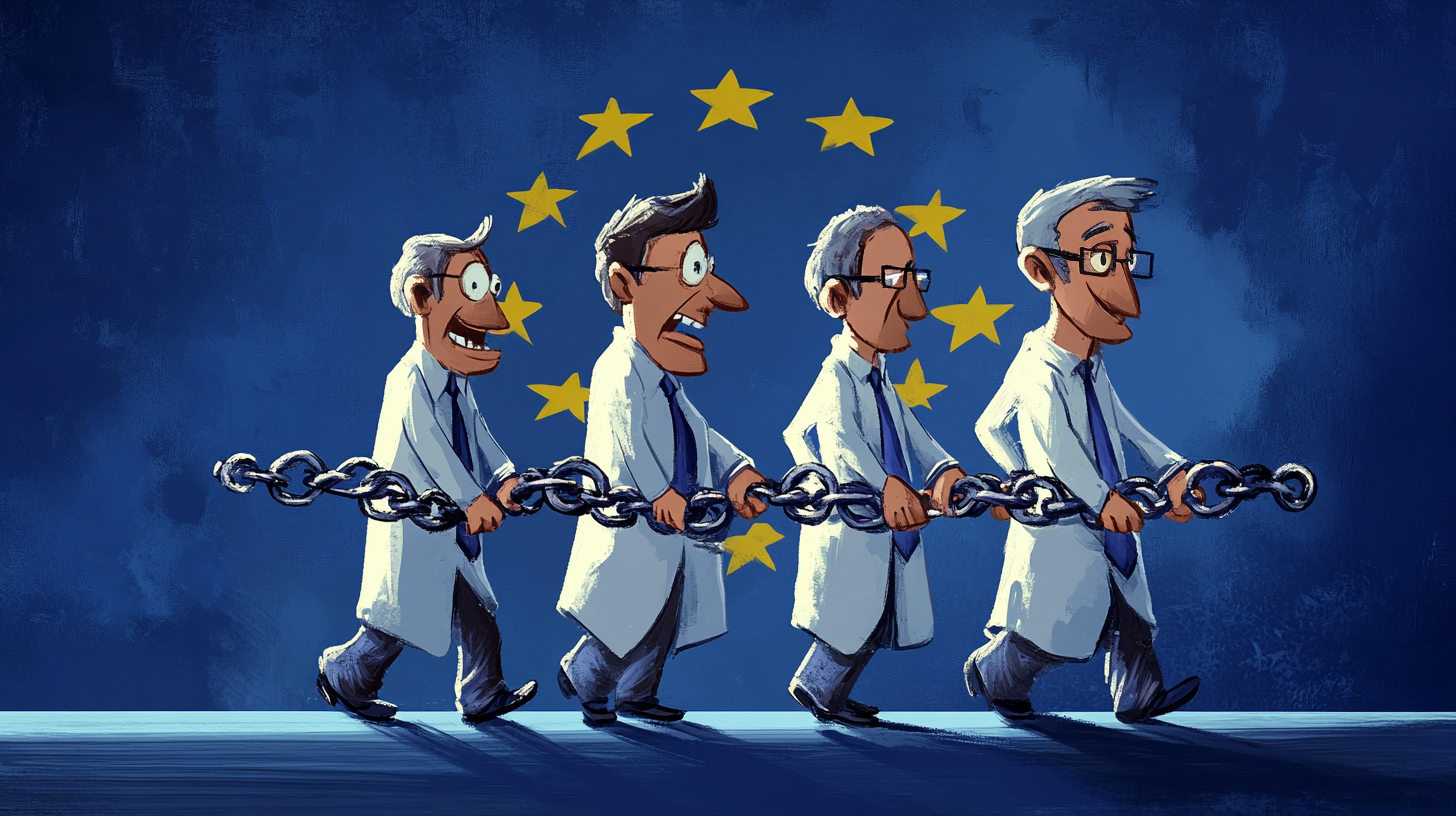
Consider, for a moment, the paradox at the heart of the European project. The EU was born from a vision of unity, of breaking down barriers between nations and peoples. Yet, in the digital age, it finds itself erecting new walls – not of brick and mortar, but of legislation and regulation. These digital barriers are no less real, and potentially far more consequential, than their physical counterparts. As we delve into this section, we’ll explore how the EU’s regulatory approach often serves to protect entrenched industries at the expense of innovation and consumer choice. We’ll examine the clash between the values of global digital citizens and the nationalistic interests that still hold sway in Brussels. And we’ll confront the uncomfortable truth that many EU regulations, far from being the product of careful, forward-thinking deliberation, are instead reactionary measures born of fear and a desperate attempt to cling to an outdated status quo.
But this is not merely a European story. The issues we’ll uncover have global implications. In a world where technology knows no borders, the EU’s decisions reverberate far beyond its geographical boundaries. Its regulations don’t just affect European citizens and companies; they shape the global technological landscape, influencing everything from the development of AI to the future of genetic engineering. As we navigate these complex issues, we must ask ourselves some difficult questions: Is the EU’s regulatory zeal truly about protecting its citizens, or is it a smokescreen for maintaining control in a rapidly changing world? Are we witnessing the last gasps of an old order desperately clinging to power, or the birth pangs of a new paradigm of governance struggling to emerge? Moreover, we must confront the possibility that the EU’s actions, however well-intentioned, may be sowing the seeds of its own irrelevance. By stifling innovation and driving away talent, is Europe consigning itself to the role of a technological backwater in the coming decades? The stakes could not be higher. As we stand on the cusp of transformative technologies that promise to reshape every aspect of human existence, the decisions made in Brussels today will echo through generations. Will Europe embrace the future, with all its uncertainties and possibilities? Or will it retreat into a fortress of regulation, sacrificing progress on the altar of an illusory security?
Let’s continue pulling back the curtain on the hidden forces shaping Europe’s technological future. For in understanding these deeper issues of power, control, and cultural stagnation, we may yet find a path forward – not just for Europe, but for all of humanity in this brave new digital world.
A. Protecting Outdated Industries: The Hidden Cost of EU Regulations
In the picturesque town of Wolfsburg, Germany, the sprawling Volkswagen factory stands as a testament to European industrial might. For decades, it has been a symbol of German engineering prowess and economic success. But as we enter the mid-2020s, this icon of the 20th century is beginning to look more like a relic than a beacon of progress.
Just a few hundred kilometers away, in Brussels, EU regulators are embroiled in heated debates about emissions standards, electric vehicle incentives, and trade policies. On the surface, these discussions are framed around environmental protection and fair competition. But dig a little deeper, and a more complex picture emerges – one of an regulatory apparatus working overtime to protect an industry that is rapidly becoming obsolete. This scenario is not unique to the automotive sector. Across Europe, from agriculture to telecommunications, from banking to energy, we see a recurring pattern: regulations that, intentionally or not, serve to protect established industries at the expense of innovation and consumer choice. It’s a pattern that threatens to leave Europe trailing in the wake of more dynamic economies, particularly as we face the urgent need for technological solutions to global challenges.

Let’s return to the automotive industry as a case study. As Chinese electric vehicle manufacturers like BYD and NIO have surged ahead in technology and market share, European regulators have responded not by encouraging greater innovation among domestic manufacturers, but by erecting barriers. High tariffs on imported electric vehicles, stringent and often arbitrary safety regulations, and complex homologation processes all serve to keep these new competitors at bay. The justifications for these measures are manifold: protecting European jobs, ensuring vehicle safety, maintaining quality standards. But the unspoken truth is that they also protect the profit margins of established European automakers who have been slow to adapt to the electric revolution. The cost of this protection is borne by European consumers, who are denied access to potentially cheaper and more advanced electric vehicles, and by the environment, as the transition to sustainable transport is effectively slowed. This protectionist approach extends far beyond the automotive sector. In agriculture, strict regulations on genetically modified organisms (GMOs) and newer gene-editing technologies have kept European farmers reliant on traditional crop varieties and chemical pesticides. While the rest of the world moves towards more resilient and sustainable agricultural practices, Europe remains stuck in an increasingly unsustainable past.
In the digital realm, the story is much the same. The General Data Protection Regulation (GDPR), while laudable in its intent to protect consumer privacy, has had the unintended consequence of entrenching the dominance of large tech companies who can afford to comply with its complex requirements. Meanwhile, innovative startups find themselves strangled by red tape before they can even get off the ground. The EU’s approach to artificial intelligence, as we’ve seen with the case of OpenAI’s Advanced Voice Mode, threatens to repeat this pattern. By imposing blanket restrictions on technologies like emotion recognition, the EU risks ceding leadership in AI development to other regions, all while denying its citizens access to potentially transformative tools. This regulatory approach reflects a deeply ingrained cultural and political bias towards the status quo. It’s a mindset that views change as a threat rather than an opportunity, that seeks to preserve the economic structures of the past rather than embracing the possibilities of the future. But this bias comes at a tremendous cost. By protecting outdated industries, the EU is effectively subsidizing inefficiency and stifling innovation. It’s creating a business environment where incumbents are insulated from the creative destruction that drives progress, where large corporations can rest on their laurels rather than pushing the boundaries of what’s possible. Moreover, this approach is fundamentally at odds with the challenges we face as a global society. Climate change, resource depletion, and the need for sustainable development all demand radical innovation and the rapid deployment of new technologies. By clinging to the industries of the past, Europe is not just hindering its own economic prospects – it’s potentially hobbling our collective ability to address existential threats. The irony is that Europe has a rich history of innovation and a wealth of scientific and engineering talent. From the invention of the World Wide Web to the development of CRISPR gene-editing technology, Europeans have been at the forefront of technological revolutions. But increasingly, these innovations are being developed and commercialized elsewhere, as entrepreneurs and researchers flee a stifling regulatory environment.
There’s also a geopolitical dimension to consider. As Europe focuses on protecting its established industries, it risks falling behind in the industries that will define the future. While China invests heavily in artificial intelligence, renewable energy, and biotechnology, Europe remains mired in debates about protecting its automotive and agricultural sectors. This is not just an economic issue, but a strategic one – in a world where technological capability increasingly equates to geopolitical power, Europe risks consigning itself to irrelevance.
The path forward is not an easy one. Transitioning away from outdated industries inevitably involves short-term pain – job losses, economic disruption, and the upheaval of established ways of life. But the alternative – a slow decline into economic stagnation and technological irrelevance – is far worse.
What’s needed is a fundamental shift in mindset among European policymakers and regulators. Rather than seeing their role as protecting existing industries, they must view themselves as facilitators of innovation and progress. This means creating regulatory frameworks that are flexible and adaptive, that encourage experimentation and risk-taking, and that prioritize long-term sustainability over short-term stability. It also means being willing to let go of the past. Just as the EU was born from the realization that the old system of nation-states was ill-equipped to meet the challenges of the post-war world, so too must it now recognize that the economic and regulatory models of the 20th century are not fit for purpose in the 21st.
The choice facing Europe is stark: continue down the path of protectionism and risk being left behind in the next wave of technological and economic development, or embrace change, however uncomfortable, and help shape the future of our global society. The protection of outdated industries may seem like a safe bet in the short term, but in the long run, it’s a strategy that leads nowhere but backwards. As we stand on the brink of transformative changes in everything from energy production to food systems to the nature of work itself, Europe has the opportunity to lead the way into a more sustainable and prosperous future. But to do so, it must first let go of its attachment to the industries of the past and embrace the possibilities of tomorrow. The question is: does it have the courage to do so?
B. The Clash of Values: Global Citizens in a World of Nation-States
In the heart of Berlin, a young software developer named Sophie sits in a co-working space, her fingers flying over her keyboard as she collaborates in real-time with team members in San Francisco, Bangalore, and Seoul. Sophie doesn’t think of herself primarily as German, or even European. She’s a global citizen, as comfortable navigating the digital realms of the internet as she is the physical streets of her home city. Sophie’s world is one of borderless collaboration, of ideas and innovations that flow freely across continents. But as she works, she’s increasingly aware of a tension – a growing disconnect between her lived reality and the regulations that govern her professional life. The EU’s digital policies, ostensibly designed to protect her, increasingly feel like shackles, limiting her ability to access cutting-edge tools and collaborate freely with her global peers. Sophie’s experience is not unique. Across Europe, a new generation of digital natives is coming of age, and they’re finding themselves caught in a clash of values that cuts to the heart of the European project. On one side stands the traditional notion of citizenship, bound to nation-states and regional blocs like the EU. On the other, a new concept of global digital citizenship, untethered from geographical boundaries and united by shared values of openness, innovation, and free exchange of ideas.
This clash is playing out in myriad ways across the European digital landscape. Take, for instance, the EU’s approach to data privacy. The General Data Protection Regulation (GDPR), hailed by many as a gold standard for privacy protection, is viewed by others as a cumbersome barrier to global collaboration. While it aims to protect European citizens’ data, it also creates significant hurdles for European companies trying to compete on a global stage. Or consider the case of cryptocurrency and blockchain technology. While many European citizens are eager to embrace these decentralized financial systems, seeing in them the potential for greater financial freedom and innovation, EU regulators have approached them with extreme caution. The result is a regulatory environment that often lags behind the technology, leaving European entrepreneurs and investors at a disadvantage compared to their counterparts in more permissive jurisdictions. The arrest of Pavel Durov, which we explored earlier, is perhaps the starkest example of this clash of values. To EU regulators, Telegram represented a threat – a platform beyond their control, potentially harboring criminal activities. But to millions of users across Europe and beyond, it was a vital tool for free communication, a digital public square where ideas could be exchanged without fear of surveillance or censorship. This disconnect between the values of global digital citizens and the priorities of national and EU regulators is creating a crisis of legitimacy. Increasingly, young Europeans like Sophie feel that the institutions meant to represent them are out of touch with their lived realities and aspirations. They see EU regulators not as protectors, but as barriers to progress, more aligned with the interests of entrenched industries than with the dreams and ambitions of the next generation.
The irony is palpable. The European Union was founded on principles of openness, cooperation, and the free movement of people and ideas. Yet in the digital realm, it often appears to be retreating into a fortress mentality, erecting barriers and imposing restrictions that run counter to these founding ideals. This clash of values extends beyond just digital policy. It touches on fundamental questions of identity and belonging in the 21st century. For many young Europeans, their strongest connections and communities exist online, transcending national borders. They may feel a stronger affinity with a fellow coder in California or a digital artist in Tokyo than with their next-door neighbor. This reality challenges traditional notions of citizenship and national identity that underpin much of EU policy. Moreover, this generation of global digital citizens often has a different set of priorities than their parents or grandparents. While older generations might prioritize stability and protection from perceived external threats, younger digital natives are more likely to value innovation, freedom of expression, and the ability to connect and collaborate globally. They’re more concerned about climate change, wealth inequality, and access to cutting-edge technology than they are about preserving traditional industry or maintaining strict border controls.
This generational and values divide is creating a ticking time bomb within the EU. As more young Europeans come of age in the digital world, the disconnect between their values and the policies of their governments is likely to grow. We’re already seeing the effects of this in political movements across the continent, with young people increasingly drawn to parties and candidates that promise to shake up the status quo. The challenge for EU policymakers is immense. How do you create regulations that protect citizens’ rights and promote European values while also fostering innovation and remaining competitive in a global digital economy? How do you balance the needs and desires of global digital citizens with the responsibilities of governing physical territories and protecting national interests? There are no easy answers, but it’s clear that the current approach is unsustainable. The EU risks alienating an entire generation of its most talented and innovative citizens if it continues to prioritize control and protectionism over openness and innovation.
What’s needed is a fundamental rethinking of what it means to be a citizen in the digital age. Perhaps we need new models of governance that can accommodate both our physical and digital realities. Maybe we need to explore concepts like “digital citizenship” that exist alongside traditional national citizenship, with its own rights and responsibilities.
We also need to reconsider how regulations are crafted and implemented in a rapidly changing technological landscape. The current model, where regulations often lag years behind technological developments, is clearly not fit for purpose. We need more adaptive, flexible regulatory frameworks that can keep pace with innovation while still protecting core values and rights. Ultimately, bridging this clash of values will require dialogue and understanding on both sides. Global digital citizens need to engage more deeply with the complex realities of governance and regulation, recognizing that with great technological power comes great responsibility. At the same time, EU regulators and policymakers need to make a concerted effort to understand and embrace the values and aspirations of the digital generation.
The stakes could not be higher. If the EU can successfully navigate this clash of values, it has the potential to become a global leader in the digital age, setting standards for how to balance innovation and protection in the 21st century. But if it fails, it risks consigning itself to irrelevance, watching from the sidelines as the future is shaped elsewhere. As we stand at this crossroads, one thing is clear: the old models are no longer sufficient. The clash of values we’re witnessing is not just a policy dispute – it’s a battle for the soul of Europe in the digital age. How it’s resolved will shape not just the future of the EU, but the global digital landscape for generations to come.
C. The GDPR Paradox: When Protection Becomes a Prison
On May 25, 2018, the European Union implemented what it hailed as a landmark piece of legislation: the General Data Protection Regulation, or GDPR. This sweeping set of rules was designed to give EU citizens greater control over their personal data and to harmonize data privacy laws across Europe. It was presented as a shield, a bulwark against the unchecked power of tech giants and the creeping surveillance of the digital age. Six years on, as we stand in the middle of 2024, the GDPR has become a Rorschach test for digital governance. To its proponents, it remains a gold standard for privacy protection, a necessary safeguard in an era of rampant data exploitation. To its critics, however, it has become a cautionary tale of good intentions gone awry, a labyrinthine set of regulations that has stifled innovation, entrenched the power of large corporations, and failed to keep pace with technological change. The truth, as always, lies somewhere in the murky middle. But as we peel back the layers of the GDPR’s impact, we uncover a paradox that cuts to the heart of the EU’s approach to digital regulation: in its quest to protect its citizens, has the EU inadvertently imprisoned them in a digital walled garden?
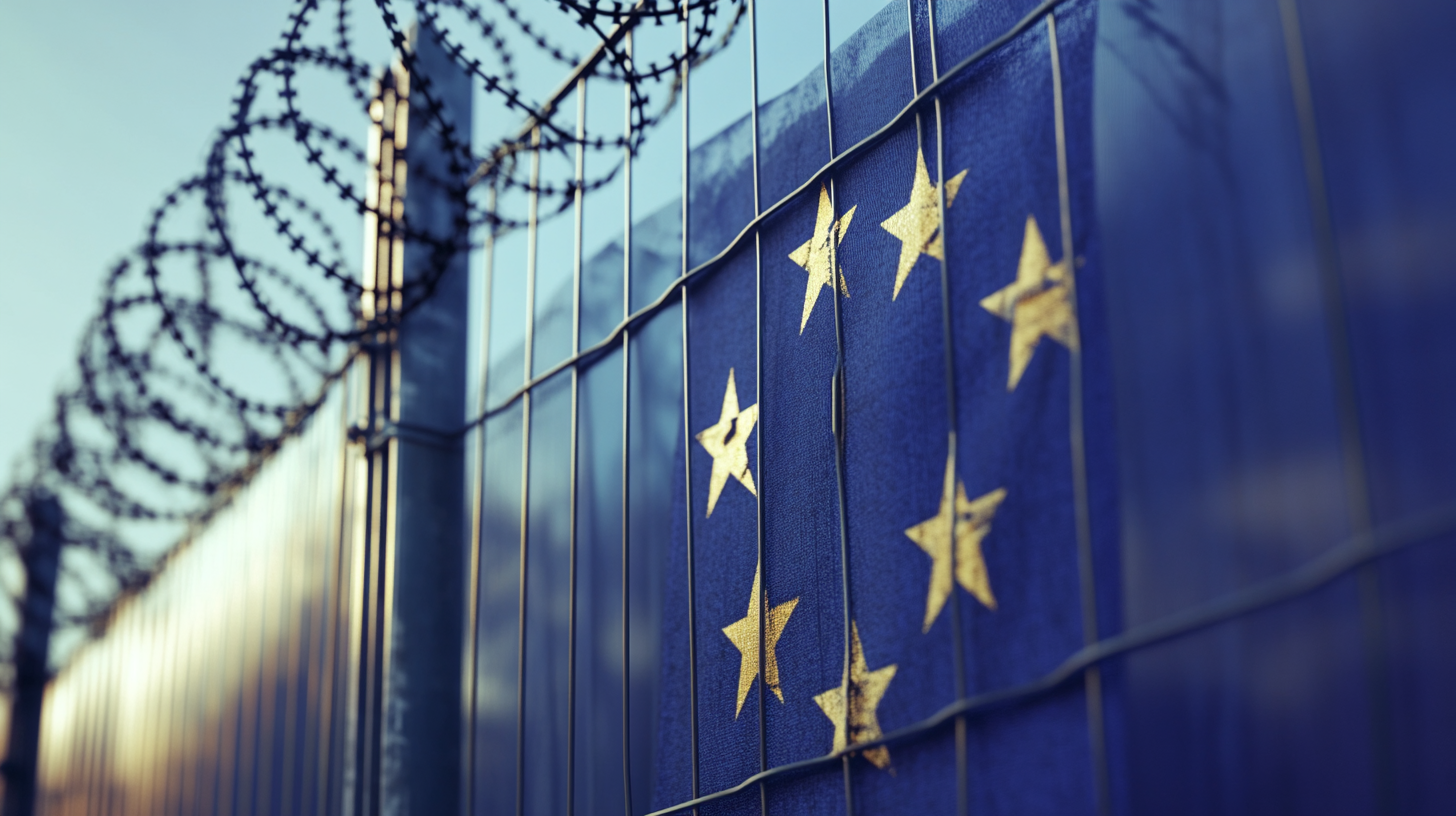
Let’s start with the undeniable positives. The GDPR has undoubtedly raised awareness about data privacy issues, both among consumers and businesses. It has forced companies to be more transparent about their data collection practices and given individuals more tools to control how their personal information is used. The regulation’s extraterritorial scope has also influenced privacy laws around the world, from California’s Consumer Privacy Act to Brazil’s Lei Geral de Proteção de Dados. But alongside these achievements, a more complex and troubling picture has emerged. Far from curbing the power of tech giants, the GDPR has, in many ways, reinforced their dominance. The cost and complexity of compliance have proven to be a significant barrier for smaller companies and startups. A 2023 study by the European Commission itself found that GDPR compliance costs for SMEs were, on average, 2-3 times higher as a percentage of revenue compared to large corporations. This has led to an unintended consequence: a concentration of data in the hands of a few large players who can afford the armies of lawyers and data protection officers needed to navigate the GDPR’s complexities. Ironically, a regulation designed to protect individuals from data exploitation has made it harder for new, potentially more privacy-friendly alternatives to emerge and challenge the status quo. Moreover, the GDPR’s strict rules on data transfers outside the EU have created a de facto data localization regime, with far-reaching implications. While intended to protect EU citizens’ data from potentially less stringent privacy regimes abroad, this has also had the effect of fragmenting the global internet and creating new barriers to international collaboration and innovation.
Consider the case of Eva, a brilliant AI researcher at a small startup in Lisbon. Her team has developed a promising new algorithm for early detection of neurodegenerative diseases. To validate their model, they need access to large, diverse datasets from around the world. But the GDPR’s restrictions on international data transfers make this prohibitively complex and expensive for a small company. Meanwhile, large pharmaceutical corporations with the resources to navigate these regulatory hurdles forge ahead, further consolidating their market position. This scenario plays out across countless fields, from scientific research to digital services. The GDPR, in its zeal to protect data, has inadvertently created a two-tier system: one for resource-rich entities that can afford compliance, and another for everyone else. But perhaps the most profound paradox of the GDPR lies in its impact on innovation in privacy-enhancing technologies themselves. The regulation’s rigid definitions of personal data and its emphasis on user consent have, in some cases, discouraged the development of innovative privacy solutions. Take, for example, advanced anonymization techniques or federated learning systems that could potentially offer better privacy protections than traditional data processing methods. Because these technologies often work with data in ways not explicitly covered by the GDPR, companies are often hesitant to invest in their development, fearing regulatory uncertainty.
This rigidity also extends to emerging technologies like blockchain and decentralized systems. The GDPR was crafted with centralized data controllers in mind, but it struggles to accommodate decentralized systems where the concepts of data controller and processor are less clear-cut. This regulatory uncertainty has pushed much of the innovation in these fields outside the EU, to jurisdictions with more flexible approaches.
The global perception of the GDPR has also evolved over time. While initially hailed as a bold step towards protecting privacy in the digital age, it’s increasingly seen by some as a form of digital protectionism. The EU’s adequacy decisions – determinations of which countries have sufficient data protection standards – have become entangled with broader geopolitical and trade issues, leading to accusations that the GDPR is being used as a tool for digital sovereignty rather than genuine privacy protection. This perception is reinforced by the EU’s struggles to effectively enforce the GDPR, particularly against large tech companies. Despite the regulation’s provisions for hefty fines, the process of investigation and enforcement has often been slow and cumbersome. This has led to a growing sense of cynicism, with some viewing the GDPR as a paper tiger – all roar and no bite.

As we look to the future, the GDPR paradox presents a crucial challenge for EU policymakers. How can the undeniable benefits of strong privacy protections be preserved while addressing the regulation’s unintended consequences? How can the EU foster a dynamic, innovative digital ecosystem while still safeguarding its citizens’ rights? Some propose a more flexible, risk-based approach to data protection, one that maintains strong safeguards for sensitive data but allows for more innovation in less critical areas. Others argue for a fundamental rethink of data rights, moving beyond the binary of consent to more nuanced models of data stewardship and collective rights. What’s clear is that the GDPR, for all its strengths, cannot be the final word in data protection. As technology continues to evolve at a breakneck pace, with AI, quantum computing, and biotechnology blurring the lines between digital and physical, personal and public, our regulatory frameworks must evolve as well. The GDPR paradox serves as a potent reminder of the law of unintended consequences in the digital age. It underscores the need for regulatory humility – an acknowledgment that in complex, rapidly evolving systems, our attempts to control and direct can often lead to unexpected and sometimes counterproductive outcomes. As the EU grapples with these challenges, the eyes of the world are watching. The resolution of the GDPR paradox will do much to determine whether Europe can chart a course towards a digital future that truly balances innovation and protection, or whether it will remain trapped in a regulatory paradigm that, however well-intentioned, may ultimately do more harm than good. In the end, the GDPR paradox is more than just a policy conundrum. It’s a mirror reflecting our broader struggles to govern the digital realm, to balance competing rights and interests, and to shape a technological future that embodies our highest values and aspirations. As we peer into this mirror, the question we must ask is not just how to fix the GDPR, but how to govern wisely in an age where the pace of technological change consistently outstrips our ability to comprehend its implications.
IV. The Rise of Decentralized Solutions: A Digital Renaissance
As the European Union grapples with the unintended consequences of its regulatory approach, a quiet revolution is brewing in the shadowy corners of the internet. From the bustling digital bazaars of the dark web to the gleaming towers of blockchain startups, a new paradigm is emerging – one that promises to upend our very understanding of governance, commerce, and social organization in the digital age.

Welcome to the world of decentralized solutions, where code is law, trust is algorithmic, and the middlemen of yesteryear – be they banks, tech giants, or even governments – find themselves increasingly obsolete. This isn’t just a tale of technological innovation. It’s a story of human ingenuity in the face of systemic constraints, a digital Prometheus stealing fire from the gods of Silicon Valley and Brussels alike. It’s a narrative that forces us to confront fundamental questions about the nature of power, the meaning of sovereignty, and the future of human organization in an increasingly interconnected world. As we’ve seen, the EU’s approach to digital regulation, epitomized by the GDPR and the AI Act, has often resulted in a paradoxical strengthening of centralized power structures. In their quest to protect citizens from the perceived threats of unbridled technological progress, European regulators have inadvertently created a landscape where only the largest, most resource-rich entities can thrive. But nature abhors a vacuum, and human creativity flourishes in the face of constraints. As the walls of regulation have grown higher, a new generation of innovators, activists, and digital pioneers have taken to tunneling underneath, crafting decentralized systems that operate beyond the reach of traditional regulatory frameworks.
Imagine a world where your personal data isn’t stored in the vast server farms of tech giants, but encrypted and distributed across a network of millions of devices, accessible only with your explicit consent. Picture a financial system where transactions occur peer-to-peer, without the need for banks or payment processors, and where monetary policy is determined by transparent algorithms rather than opaque central banks. Envision social networks where content moderation is a collaborative, community-driven process rather than the dictate of corporate policies or government mandates. Conceive of digital identities that you truly own and control, allowing you to interact with digital services without surrendering your privacy or autonomy. This is the promise of decentralized solutions. It’s a vision of a digital world that more closely aligns with the internet’s original promise – a global, open network where information flows freely, innovation knows no borders, and power is distributed rather than concentrated. But this vision is not without its challenges and contradictions. As we’ll explore, decentralized systems bring their own set of thorny issues, from questions of scalability and user experience to concerns about accountability and the potential for new forms of digital inequality. Moreover, the rise of decentralized solutions poses a fundamental challenge to the traditional notions of state sovereignty and regulatory authority. How do you regulate a system that, by design, resists centralized control? What happens when code truly becomes law, superseding the edicts of parliaments and courts?
As we delve into this brave new world of decentralized technologies, we’ll examine how these systems are already reshaping various domains, from finance and communication to identity and governance. We’ll explore the potential of these technologies to address some of the very issues that EU regulations have struggled with – from data privacy and AI ethics to content moderation and digital rights. But we’ll also cast a critical eye on the hyperbole and utopianism that often surrounds these technologies. Are decentralized solutions truly the panacea their proponents claim, or do they risk creating new forms of digital feudalism, where code becomes a new form of unaccountable power? As the EU and other regulatory bodies around the world grapple with the challenges posed by rapid technological change, decentralized solutions offer both a critique of current approaches and a potential path forward. They challenge us to reimagine not just our technologies, but our very concepts of governance, citizenship, and human organization in the digital age.
Let’s continue further down the rabbit hole, us as we explore this digital frontier, where the dreams of cypherpunks and the nightmares of regulators collide, and where the future of our digital societies is being forged in real-time. For in understanding the rise of decentralized solutions, we gain not just insight into a set of emerging technologies, but a window into the very soul of our digital zeitgeist – and perhaps, a glimpse of the world to come.
A. The Need for Technological Freedom: Breaking the Regulatory Chains
In the heart of Tallinn, Estonia’s digital hub, a group of programmers huddle around their computers, their faces illuminated by the ghostly glow of multiple monitors. They’re not working on the next big social media app or a revolutionary AI algorithm. Instead, they’re engaged in a far more subversive activity: they’re building a decentralized, end-to-end encrypted communication platform that can operate beyond the reach of any single government or corporation. This scene, replicated in co-working spaces and hackerspaces from Lisbon to Ljubljana, embodies a growing movement across Europe – a movement driven by the urgent need for technological freedom. It’s a response to what many see as an increasingly stifling regulatory environment, where innovation is constrained not by the limits of human ingenuity, but by the boundaries of bureaucratic imagination. The need for technological freedom isn’t just about the right to tinker or the abstract principle of innovation. In an era where technology underpins every aspect of our lives, from communication and commerce to healthcare and education, the freedom to innovate technologically has become inextricably linked with fundamental human rights and societal progress.

Consider the case of encryption, a battleground where the need for technological freedom is starkly evident. In the wake of terrorist attacks and amid growing concerns about online criminality, European regulators have repeatedly flirted with the idea of mandating backdoors in encrypted communication systems. The argument is seductively simple: if law enforcement can’t access encrypted communications, how can they protect us from those who would do us harm? But this line of thinking fundamentally misunderstands the nature of encryption. As any cryptographer will tell you, a backdoor for the “good guys” is inevitably a vulnerability that can be exploited by the “bad guys” too. More importantly, it fails to recognize the myriad vital uses of strong encryption, from protecting journalistic sources and human rights activists to securing financial transactions and safeguarding personal data. The EU’s approach to encryption exemplifies a broader pattern in its tech regulations: a tendency to focus on potential harms while undervaluing the transformative potential of new technologies. This mindset has led to a regulatory environment that often feels more like a straitjacket than a safety net.
Take the field of artificial intelligence. The EU’s AI Act, while well-intentioned in its aim to prevent harmful uses of AI, risks throwing the proverbial baby out with the bathwater. By imposing strict regulations on broad categories of AI applications, it threatens to stifle innovation in areas that could bring enormous societal benefits, from personalized medicine to climate modeling.
The creators of OpenAI’s Advanced Voice Mode, which we discussed earlier, found themselves caught in this regulatory net. A technology that could revolutionize human-computer interaction and provide invaluable assistance to people with disabilities was effectively banned in the EU due to concerns about emotion recognition – concerns that many experts argue are overblown and fail to account for the technology’s potential benefits. This regulatory overreach doesn’t just impact big tech companies. In many ways, it’s the small startups and individual innovators who bear the brunt of these restrictions. The costs of compliance, the legal uncertainties, and the sheer complexity of navigating the regulatory landscape create significant barriers to entry, stifling the very ecosystem of innovation that has historically driven technological progress. The result is a kind of regulatory brain drain. Increasingly, we’re seeing European innovators either relocating to more permissive jurisdictions or choosing to operate in legal gray areas, building systems designed to circumvent regulatory oversight altogether. This not only deprives Europe of potential economic benefits but also reduces its influence over how these technologies develop and are used. The need for technological freedom is about more than just economic competitiveness or abstract notions of progress. In an era of unprecedented global challenges – from climate change to pandemics to the existential risks posed by advanced AI – our ability to innovate technologically may well determine our survival as a species.
Consider the field of biotechnology. The EU’s restrictive stance on genetically modified organisms and gene editing techniques has put European researchers at a significant disadvantage compared to their counterparts in countries like the US and China. As we face the twin threats of food insecurity and antibiotic resistance, can we really afford to hamstring our scientists and innovators with overly cautious regulations? The call for technological freedom is not a call for a regulatory free-for-all. Rather, it’s an appeal for a more nuanced, adaptive approach to governance – one that recognizes the transformative potential of technology alongside its risks. It’s a plea for regulatory frameworks that are as innovative and dynamic as the technologies they seek to govern. What might such an approach look like in practice? It could involve regulatory sandboxes where new technologies can be tested in controlled environments, free from the full weight of existing regulations. It might include sunset clauses in tech-related laws, forcing regular reviews and updates to ensure regulations keep pace with technological change. It could embrace the principle of “permissionless innovation,” where new technologies are allowed by default unless specific harms are demonstrated. More fundamentally, it requires a shift in mindset among regulators and policymakers. Rather than asking, “What could go wrong if we allow this technology?” we should also be asking, “What opportunities might we miss if we don’t?” It means moving from a precautionary principle to a proactionary principle, one that weighs the risks of inaction alongside the risks of action.
The need for technological freedom is, at its core, a need for the freedom to shape our own future. In a world where technology is increasingly determining the contours of human possibility, the ability to innovate technologically is becoming synonymous with the ability to chart our own destiny as a society and as a species.
As we stand on the brink of transformative breakthroughs in AI, biotechnology, quantum computing, and fields we have yet to imagine, the question before us is clear: Will we embrace the uncertainty and potential of technological freedom, or will we allow our future to be constrained by the limitations of our present-day regulations? The programmers in Tallinn, and countless others like them across Europe and beyond, have made their choice. They’re voting with their keyboards, building the decentralized, resilient systems that they believe the future requires. The question is, will European regulators have the wisdom and courage to embrace this spirit of innovation, or will they continue to cling to an increasingly untenable status quo? The need for technological freedom is not just a matter of policy or economics. It’s a fundamental question of human agency in the digital age. As we navigate the uncharted waters of our technological future, it may well be our most powerful compass.
B. Blockchain and Cryptocurrency: The Foundation of a Decentralized Future
In the annals of technological history, certain innovations stand out as true paradigm shifts – inventions that fundamentally alter the way we interact with the world and with each other. The printing press democratized knowledge. The internet revolutionized communication. And now, blockchain and cryptocurrency are poised to transform the very fabric of our digital society. But to truly understand the revolutionary potential of these technologies, we need to look beyond the hype cycles and price fluctuations that often dominate headlines. We need to envision a world where blockchain and cryptocurrency serve not just as speculative assets or niche payment systems, but as the foundational infrastructure for a new kind of digital ecosystem – one that prioritizes privacy, security, and individual autonomy.

Enter GRIDNET OS, a concept so audacious in its scope and so transformative in its potential that it makes previous blockchain projects look like mere proofs of concept. Imagine, if you will, an entire operating system built on blockchain principles – a decentralized digital environment that offers everything from storage and computing power to social applications and user interfaces, all without a single point of central control or trust. The implications of such a system are staggering. In a world where GRIDNET OS or something like it becomes reality, the regulatory walls that currently fragment our digital experiences could become as obsolete as the Berlin Wall in a unified Germany. Researchers in Paris could collaborate seamlessly with colleagues in Pune, sharing data and computing resources without worrying about data localization laws or export controls. Activists in authoritarian regimes could communicate and organize using end-to-end encrypted applications that don’t require phone numbers or other identifying information, their activities shielded from prying eyes by the very architecture of the system. But GRIDNET OS isn’t just about evading regulation or circumventing control. At its core, it’s about reimagining how our digital infrastructure can and should work. In this new paradigm, cryptocurrency isn’t an end in itself, but a means to an end – the cornerstone of an incentive structure that makes the entire ecosystem possible.
Consider the GNC (GRIDNET Coin), the hypothetical cryptocurrency that powers this decentralized utopia. Unlike many existing cryptocurrencies, GNC isn’t just designed for speculation or store of value. Instead, it serves as the lifeblood of the entire GRIDNET ecosystem, incentivizing a global network of service providers to offer everything from storage space and computing power to application development and content creation. Want to store your data in a decentralized, encrypted format that’s not beholden to any single company or government? You’d pay for that storage in GNC. Need massive computing power for a complex scientific simulation? Rent it from the GRIDNET network, compensating the providers in GNC. Looking for a social media platform that doesn’t harvest your data or manipulate your feed for engagement? There’d be dozens to choose from on GRIDNET, all funded through microtransactions in GNC.
The beauty of this system lies in its alignment of incentives. Service providers are motivated to offer high-quality, privacy-respecting services because that’s what users will pay for. Users have true ownership and control over their digital lives because they’re not locked into any single platform or ecosystem. And the entire network becomes more robust and valuable as more people join and contribute, creating a virtuous cycle of growth and innovation. But perhaps the most revolutionary aspect of GRIDNET OS is its potential to accelerate the pace of technological progress itself. In our current regulatory environment, groundbreaking AI algorithms or innovative biotechnology applications can languish for years in a limbo of legal uncertainty and regulatory approval processes. On GRIDNET, these innovations could be deployed almost instantly, available to users and other developers as soon as they’re ready.
Imagine a world where a team of researchers develops a new AI model for early cancer detection. Instead of spending years navigating regulatory approvals and corporate partnerships, they could deploy their model on GRIDNET the very next day, making it immediately available to medical professionals and researchers worldwide. The potential for rapid iteration, collaborative improvement, and global impact is immense. What sets GRIDNET OS apart is its innovative approach to governance and community involvement. By employing both majority voting and the concept of stake, GRIDNET OS ensures that the system as a whole can be guided democratically by its users and developers. This means that crucial decisions about the platform’s development and policies are not made by a centralized authority, but by the collective will of its community. Furthermore, GRIDNET OS comes equipped with a sophisticated set of APIs specifically designed to enable democratic, votable content. As detailed at https://gridnet.org/wpp/index.php/2023/07/08/dao-api-for-next-gen-decentralized-social-platforms/ , these APIs allow users and developers to deploy decentralized social media applications where content can be voted on by the community. The beauty of this system is its flexibility – authors of forums and portals running atop GRIDNET OS can customize how these voting mechanics operate, tailoring them to the specific needs and values of their communities. This level of democratic control and customization opens up exciting possibilities. For instance, in our cancer detection AI example, the medical community could vote on which models to prioritize for further development, or which datasets to use for training. Patients could have a say in how their data is used, all within a framework that ensures privacy and security.
The promise of GRIDNET OS and its ilk is not just technological, but deeply social and political. It offers a vision of a digital world where power is distributed, where communities can self-govern, and where innovation can flourish unencumbered by centralized control. As we move forward, it will be crucial to closely watch and participate in the development of these systems, ensuring they live up to their democratic and empowering potential. Moreover, systems like GRIDNET OS offer a potential solution to the regulatory paradox we’ve explored throughout this article. Instead of trying to force dynamic, global technologies into the Procrustean bed of national or regional regulations, we could create digital spaces that operate according to their own internal logic and governance structures. This doesn’t mean a complete absence of rules, but rather a shift towards systems of governance that are as decentralized and adaptive as the technologies they oversee. As we stand on the brink of this potential decentralized revolution, it’s crucial to recognize that technologies like blockchain and cryptocurrency are not just incremental improvements on our current digital infrastructure. They represent a fundamental rethinking of how we organize and incentivize human collaboration in the digital age.
The road to realizing this vision will undoubtedly be long and fraught with challenges. But as Europe grapples with the limitations of its current regulatory approach, and as citizens worldwide increasingly chafe against the constraints and surveillance of our current digital ecosystems, the allure of truly decentralized alternatives will only grow stronger. In the end, the promise of systems like GRIDNET OS is not just technological, but deeply human. It’s a promise of digital self-determination, of the freedom to innovate and collaborate without artificial constraints. It’s a vision of a digital world that enhances rather than inhibits our collective human potential. As we move forward into this uncertain but exciting future, one thing is clear: the genie of decentralization is out of the bottle. Whether through GRIDNET OS or other yet-to-be-imagined systems, the principles of blockchain and cryptocurrency are set to reshape our digital landscape in profound and far-reaching ways. The question is not if this transformation will happen, but how we will navigate and shape it to create a digital future that truly serves humanity’s highest aspirations.
C. GRIDNET OS: A Decentralized Solution for a Free Digital Future
As we’ve explored the challenges posed by centralized control and restrictive regulations, a question naturally arises: What alternatives exist? Enter GRIDNET OS, a revolutionary decentralized operating system that promises to address many of the issues we’ve discussed, offering a glimpse into a potential future where technological freedom and innovation can flourish without compromising security or privacy. GRIDNET OS isn’t just another blockchain project or a minor iteration on existing technologies. It represents a fundamental reimagining of how our digital infrastructure can and should work. By leveraging the power of blockchain and distributed computing, GRIDNET OS offers a suite of features that could radically transform our digital landscape. At its core, GRIDNET OS is built on the principle of decentralization. Unlike traditional operating systems that rely on centralized servers and authorities, GRIDNET OS operates on a peer-to-peer network. This architectural choice has far-reaching implications:
- Enhanced Security and Privacy: In a world where data breaches and privacy violations have become disturbingly common, GRIDNET OS offers a refreshing alternative. Its decentralized nature means there’s no single point of failure for attackers to target. Moreover, user data is encrypted and distributed across the network, with users retaining full control over their information. This approach effectively addresses many of the concerns that have led to restrictive regulations like GDPR, but without the unintended consequences of stifling innovation.
- True Ownership of Digital Identity: One of the most revolutionary aspects of GRIDNET OS is its approach to digital identity. Unlike current social media and communication platforms that often require phone numbers or other personally identifiable information, dApps built on GRIDNET OS can offer truly anonymous and secure communication. Imagine a version of Telegram or Signal that doesn’t need your phone number – that’s the reality GRIDNET OS can enable.
- Borderless Innovation: GRIDNET OS could effectively bypass many of the regulatory hurdles we’ve discussed. Its decentralized nature means it’s not bound by any single jurisdiction’s laws. This could be a game-changer for researchers, developers, and innovators who currently find themselves constrained by regional regulations. A scientist working on a cutting-edge AI algorithm could deploy it on GRIDNET OS, making it instantly available to collaborators worldwide without worrying about navigating complex international data transfer laws.
- Resource Optimization: Through its decentralized processing threads and two-tier storage system, GRIDNET OS allows for more efficient use of computing resources. This could democratize access to high-performance computing, allowing users to tap into a global network of shared resources for tasks ranging from scientific simulations to rendering complex 3D animations.
- Resilience Against Censorship: The decentralized nature of GRIDNET OS makes it inherently resistant to censorship. This could be crucial for activists, journalists, and citizens living under authoritarian regimes. A social media platform built on GRIDNET OS, for instance, would be nearly impossible for a government to shut down or censor.
- Incentivized Participation: Through its native cryptocurrency system, GRIDNET OS creates a circular economy where users are incentivized to contribute resources to the network. This aligns individual interests with the collective good, potentially creating a more cooperative and efficient digital ecosystem.
- Programmable Economy: With its support for smart contracts and introduction of specialized programming languages like GridScript and GridScript++, GRIDNET OS opens up new possibilities for creating sophisticated, automated, and trustless economic systems. This could revolutionize everything from supply chain management to financial services.
- UI Innovation: The decentralized UI interface of GRIDNET OS represents a paradigm shift in how we interact with our devices. By rendering UI components from decentralized nodes, it offers unparalleled customization and resilience. Imagine a social media app where the interface itself is immune to centralized manipulation or dark patterns designed to increase engagement at the cost of user well-being.
Consider how GRIDNET OS could address some of the specific issues we’ve explored:
- The OpenAI Voice Mode Ban: On GRIDNET OS, developers could create and deploy advanced AI models without fear of regional restrictions. Users worldwide could access these innovations, with their privacy protected by the system’s inherent security features.
- The Arrest of Pavel Durov: A messaging app built on GRIDNET OS would be virtually impossible to shut down or compromise. There would be no central authority to arrest, no servers to seize. The very concept of “unlawfully providing cryptology services” becomes moot in a system where secure, encrypted communication is a fundamental feature. No mobile phone numers are collected ever and no meta-data stored, regarding anything.
- Gene Editing Regulations: Researchers could use GRIDNET OS to collaborate on gene editing projects, sharing data and computational resources across borders. While this wouldn’t eliminate ethical concerns, it would allow for more rapid innovation and global cooperation in addressing pressing challenges like climate-resistant crops or disease treatments.
Of course, the rise of systems like GRIDNET OS would not be without challenges. Questions of governance, accountability, and preventing misuse would need to be addressed. But these challenges are not insurmountable, and the potential benefits are too significant to ignore. As we stand at this crossroads in our digital evolution, GRIDNET OS offers a compelling vision of an alternative path forward. It shows us a future where innovation is unshackled from restrictive regulations, where privacy is a fundamental right rather than a luxury, and where the power of our digital lives rests in our own hands rather than in the data centers of tech giants or the legislative chambers of governments.
The question before us is not whether such systems will emerge – they are already on the horizon. The real question is how we, as a global society, will respond to this shift. Will we embrace the potential of decentralized systems like GRIDNET OS, using them to create a more open, innovative, and equitable digital world? Or will we cling to outdated models of centralized control, watching as innovation and progress increasingly happen outside our regulatory walls? As we ponder these questions, one thing is clear: the genie of decentralization is out of the bottle. Systems like GRIDNET OS represent not just a technological evolution, but a philosophical one – a reimagining of how we organize our digital societies. As we move forward, it will be crucial for policymakers, technologists, and citizens alike to engage with these new paradigms, shaping them to serve the greater good while preserving the values of openness, innovation, and individual liberty that have driven human progress throughout history.
V. The Global Perspective: Europe’s Regulatory Overreach in a Borderless Digital World
As the European Union continues to craft and implement its complex web of digital regulations, it’s crucial to step back and consider the global ramifications of these policies. The EU, with its population of over 450 million and its economic heft, isn’t operating in a vacuum. Its regulatory decisions send ripples—and sometimes shockwaves—across the global digital landscape, influencing how technology is developed, deployed, and governed far beyond its borders. From the sun-soaked tech campuses of Silicon Valley to the bustling startup hubs of Bangalore and the gleaming skyscrapers of Shenzhen, the world is watching Europe’s digital regulatory experiment with a mix of fascination, concern, and, increasingly, frustration.
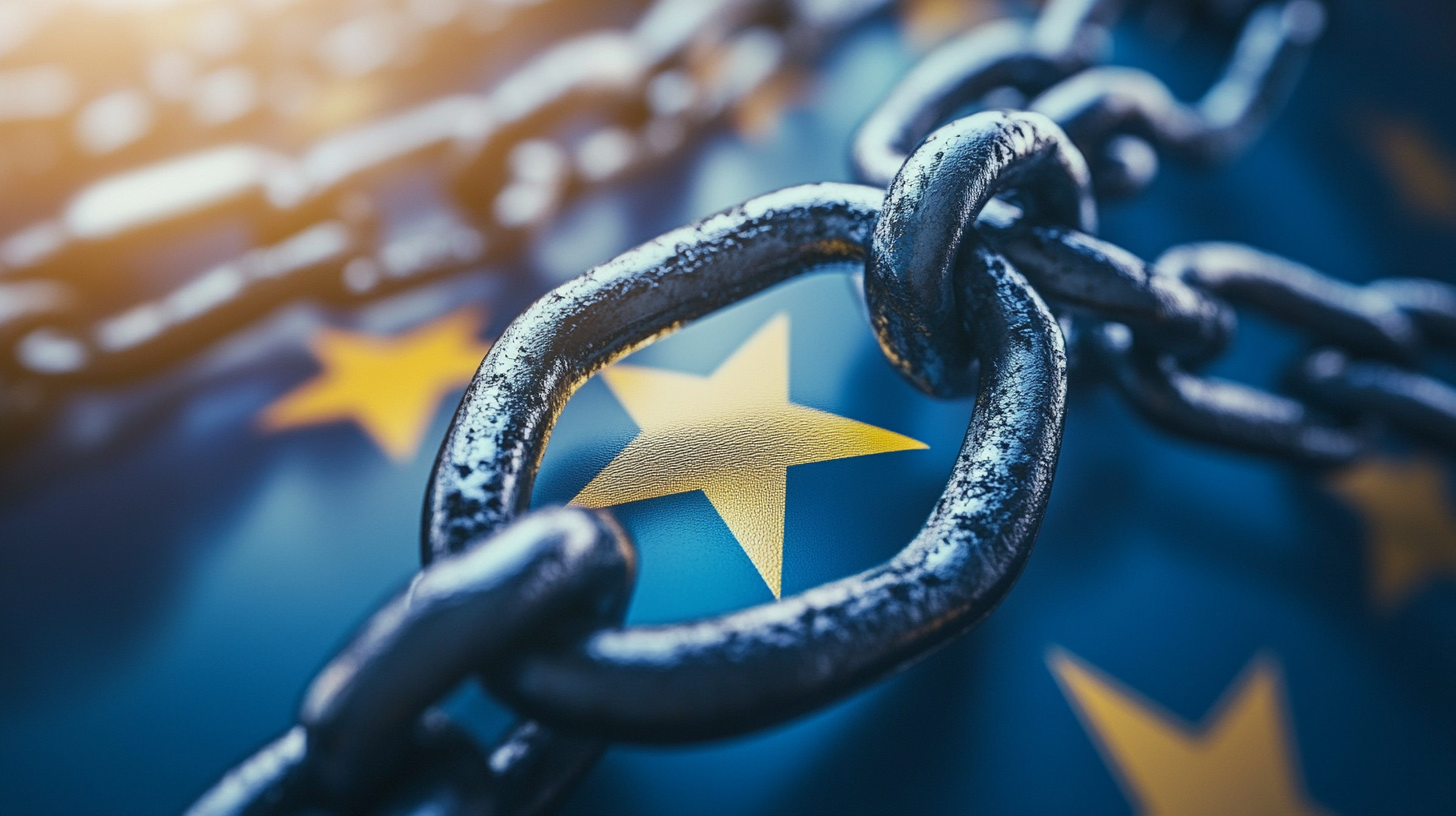
Let’s begin our global tour in the United States, where the reaction to EU regulations has been particularly pointed. American tech giants, long accustomed to the relatively laissez-faire approach of their home market, have found themselves caught in a regulatory vice. On one side, they face increasing scrutiny at home over issues of monopoly power and content moderation. On the other, they grapple with the EU’s stringent rules on data protection, AI development, and digital markets. The sentiment in Silicon Valley oscillates between grudging admiration for the EU’s ambition and outright exasperation at what many view as regulatory overreach. As one prominent venture capitalist put it, “Europe is turning into a digital retirement home. They’re so focused on protecting what they have that they’re missing out on building what comes next.” This perception has real consequences. We’re seeing a growing trend of U.S. tech companies either delaying their European launches or withdrawing services altogether. The case of OpenAI’s Advanced Voice Mode, which we discussed earlier, is just one high-profile example. Countless smaller innovations never make it to European shores, deemed not worth the regulatory hassle.
Moving east to China, the perspective shifts. Chinese tech companies and policymakers view the EU’s regulatory stance through a different lens. On one hand, there’s a degree of schadenfreude at seeing Western tech giants struggle with regulatory constraints. On the other, there’s concern that the EU’s approach might set a global precedent that could eventually constrain China’s own digital ambitions. Interestingly, some Chinese companies see opportunity in Europe’s regulatory climate. As Western tech giants pull back, Chinese firms, already accustomed to operating in a heavily regulated environment at home, are stepping in to fill the void. This raises its own set of concerns about digital sovereignty and data security, adding another layer of complexity to Europe’s tech landscape.
In the developing world, the EU’s regulatory approach is often viewed with a mix of admiration and trepidation. Many countries look to the EU as a model for how to protect citizens’ digital rights and rein in the power of big tech. The GDPR, for all its flaws, has inspired similar data protection laws around the globe, from Brazil’s LGPD to India’s proposed Personal Data Protection Bill. However, there’s also growing concern that the EU’s high regulatory bar is creating a form of digital colonialism. Smaller countries and emerging economies fear being caught between the regulatory regimes of the EU, the U.S., and China, forced to choose sides in an increasingly fragmented global digital ecosystem. This fragmentation is perhaps the most significant global consequence of the EU’s regulatory approach. We’re witnessing the emergence of what some analysts call the “splinternet”—a balkanized internet where different regions operate under different rules, hindering the free flow of information and innovation that has been the internet’s hallmark. The implications of this fragmentation are profound. Consider the field of artificial intelligence, where global collaboration is crucial for addressing challenges like climate change, disease prevention, and space exploration. The EU’s restrictive approach to AI development, exemplified by the AI Act, risks creating an innovation gap that could have far-reaching consequences for humanity’s ability to tackle these existential challenges. Moreover, the EU’s regulatory stance is influencing global norms around concepts like privacy, free speech, and the role of technology in society. While the intention may be noble, there’s a growing chorus of voices arguing that the EU is imposing its values on the rest of the world without sufficient consideration for diverse cultural contexts and differing societal needs. This normative power is particularly evident in the realm of internet governance. The EU’s vision of a highly regulated, tightly controlled internet stands in stark contrast to the more open, decentralized model championed by countries like the U.S. and, ironically, embodied in projects like GRIDNET OS. As the EU pushes its model through mechanisms like adequacy decisions and trade agreements, it’s effectively exporting its digital governance philosophy, for better or worse.
The global tech community’s response to this regulatory pressure cooker has been telling. We’re seeing a surge of interest in decentralized technologies, privacy-enhancing cryptography, and borderless digital ecosystems. Projects like GRIDNET OS, which we explored earlier, are gaining traction not just as technological innovations, but as philosophical rebuttals to the EU’s centralized, top-down approach to digital governance. In many ways, this push towards decentralization is a direct response to the perceived overreach of EU regulations. Developers, entrepreneurs, and digital rights activists are increasingly looking to create systems that are, by design, resistant to centralized control and regulatory capture. It’s a digital arms race, with innovators seeking to stay one step ahead of regulators. This trend towards decentralization and regulatory arbitrage poses a significant challenge to the EU’s digital ambitions. As more services move to decentralized platforms, the EU’s ability to enforce its regulations becomes increasingly tenuous. We may be approaching a tipping point where the very act of imposing stricter regulations accelerates the development of technologies that render those regulations moot.
The irony is palpable. The EU, in its quest to shape the digital future, may be inadvertently hastening the development of a technological paradigm that operates beyond its control. It’s a classic case of the Streisand effect, where attempts to suppress or control something only serve to draw more attention and energy to it. As we survey this global landscape, a question emerges: Is the EU’s regulatory approach sustainable in a world of borderless digital innovation? Are we witnessing the last gasp of the nation-state’s attempt to assert control over the digital realm, or the birth of a new model of digital governance that will shape the coming decades? The answer, as is often the case in the complex interplay of technology and policy, is not clear-cut. What is clear, however, is that the EU’s actions are having profound and often unintended consequences on the global stage. As Europe doubles down on its regulatory approach, it risks not only stifling innovation within its borders but also isolating itself from the global currents of technological progress. The challenge for the EU—and indeed, for all of us—is to find a balance between protecting legitimate societal interests and fostering the kind of open, dynamic innovation ecosystem that has driven human progress in the digital age. It’s a delicate tightrope walk, and as we’ve seen, the consequences of missteps can be far-reaching.
One thing is certain: the global tech community is watching Europe closely, not just as a market or a regulatory regime, but as a case study in the perils and possibilities of attempting to govern the ungovernable, to regulate the innately disruptive force that is technological innovation. The lessons learned from Europe’s grand experiment in digital regulation will likely shape the contours of our global digital society for generations to come.
VI. Potential Solutions and Future Outlook: Charting a Course for Digital Harmony
As we stand at this critical juncture in the evolution of our digital society, the challenges we face may seem daunting. The clash between innovation and regulation, the tension between national interests and global realities, and the widening gap between technological possibilities and public understanding all point to a digital future fraught with complexity. Yet, within these challenges lie opportunities – chances to reimagine our approach to governance, to redefine our concept of citizenship, and to forge a new relationship between technology and society.
Let us explore some potential pathways forward, not as definitive solutions, but as starting points for a broader conversation about the future we wish to create.
A. Balancing Innovation and Regulation
The fundamental challenge we face is how to create a regulatory environment that protects societal interests without stifling the very innovation we need to address our most pressing challenges. The current model of static, top-down regulation is clearly ill-suited to the dynamic nature of technological progress. We need a new approach – one that is as adaptive and flexible as the technologies it seeks to govern.
Adaptive Regulatory Frameworks
Imagine a regulatory system that evolves in real-time, powered by AI and machine learning algorithms that can analyze vast amounts of data to identify emerging trends and potential risks. Such a system could adjust its parameters dynamically, tightening restrictions where needed and loosening them where innovation shows particular promise. For instance, in the realm of AI development, instead of blanket bans on technologies like emotion recognition, an adaptive framework could monitor the development and deployment of such technologies in real-time. It could adjust regulations based on observed benefits and risks, allowing for controlled experimentation while maintaining safeguards against misuse.
Regulatory Sandboxes and Experimental Zones
The concept of regulatory sandboxes, already employed in some jurisdictions for fintech innovations, could be expanded to cover a broader range of technologies. These controlled environments allow for the testing of new technologies under relaxed regulatory conditions, providing valuable data on their impacts and potential risks. Taking this a step further, we could envisage the creation of “innovation zones” – designated areas where companies and researchers can operate under a more permissive regulatory regime. Picture a “AI City” where the most cutting-edge machine learning models can be developed and tested in real-world conditions, or a “Biotech Valley” where genetic engineering techniques can be explored more freely.These zones would serve not just as hubs of innovation, but as living laboratories, providing invaluable insights that could inform broader regulatory policies. They would allow for a more nuanced, evidence-based approach to regulation, replacing fear-driven restrictions with data-driven decision making.
B. Embracing Global Citizenship
The digital realm knows no borders, and our governance models need to evolve to reflect this reality. The concept of digital citizenship, transcending traditional notions of nationality, is not just a futuristic ideal – it’s an emerging necessity in our interconnected world.
Rethinking Legislation for a Borderless Digital World
We need to move beyond the paradigm of national or even regional (like the EU) digital regulations. Instead, we should work towards a global digital rights framework – a kind of “Digital Universal Declaration of Human Rights” that enshrines core principles of privacy, security, and freedom of expression in the digital realm.
This framework would serve as a baseline, with individual nations able to build upon it but not detract from its core protections. It would provide a common language for digital rights, facilitating cross-border collaboration and reducing the fragmentation of the global digital landscape.
Encouraging Cross-Border Collaboration and Innovation
Rather than treating digital sovereignty as a zero-sum game, we should incentivize international cooperation in technology development. This could take the form of global research initiatives, similar to the Large Hadron Collider or the International Space Station, but focused on digital technologies.
Imagine a “Global AI Commons” where researchers from around the world collaborate on developing safe and beneficial artificial intelligence, or an “International Quantum Computing Alliance” pooling resources and expertise to advance this transformative technology.
Such initiatives would not only accelerate technological progress but also foster a sense of shared purpose and global citizenship among participants. They would demonstrate that our common challenges and aspirations in the digital realm far outweigh our differences.
C. Education and Public Discourse
Perhaps the most crucial element in charting a positive course for our digital future is bridging the knowledge gap between technologists, policymakers, and the general public. Without a shared understanding of the possibilities and challenges of emerging technologies, we risk making decisions based on fear and misunderstanding rather than informed deliberation.
Improving Scientific Literacy Among Policymakers and the Public
We need a concerted effort to improve digital and scientific literacy at all levels of society. This goes beyond basic computer skills – it means fostering a deep understanding of the principles underlying key technologies like AI, blockchain, and biotechnology. For policymakers, this could take the form of mandatory technology briefings or even “code-along” sessions where they get hands-on experience with the technologies they’re tasked with regulating. For the public, we need to reimagine science education, moving away from rote memorization towards a more experiential, project-based approach that emphasizes the real-world applications and implications of scientific concepts.
Fostering Open Dialogue Between Tech Innovators and Regulators
We need to break down the silos between the tech world and the policy world. This could involve creating permanent liaison positions – “tech ambassadors” embedded in regulatory bodies and “policy fellows” working within tech companies. These individuals would serve as bridges, facilitating ongoing dialogue and mutual understanding. Regular public forums – a kind of “Digital Davos” – could bring together technologists, policymakers, ethicists, and citizens to debate and shape the future of our digital society. These events would serve not just as talking shops, but as active workshops where policy proposals are developed and refined in real-time, leveraging the collective intelligence of diverse stakeholders.

Strangely (?) , to some, the above might radiate with calmness and safety, instead of fear..
It’s clear that the path forward is neither a regulatory crackdown nor a technological free-for-all. Instead, we need to forge a middle path – one that harnesses the transformative power of technology while remaining true to our core values and societal goals. This path will not be easy. It will require us to question long-held assumptions about governance, citizenship, and the role of technology in society. It will demand new levels of global cooperation in an era of rising nationalism and geopolitical tensions. And it will necessitate a commitment to ongoing learning and adaptation in the face of rapid technological change. But the potential rewards are immense. By reimagining our approach to digital governance, we have the opportunity to create a global digital commons that enhances human flourishing, accelerates scientific progress, and helps us address the existential challenges facing our species. The choice before us is clear. We can cling to outdated models of regulation and risk stifling the very innovations we need to secure our future. Or we can embrace a new paradigm of adaptive governance, global collaboration, and public engagement – one that allows us to navigate the digital frontier with wisdom, foresight, and shared purpose. As we stand on the brink of transformative technologies like artificial general intelligence, quantum computing, and human genetic engineering, the stakes could not be higher. The decisions we make in the coming years will shape not just our digital landscape, but the very future of human civilization. The journey ahead is uncertain, but it is also filled with unprecedented possibility. By fostering a spirit of openness, collaboration, and thoughtful innovation, we can ensure that our digital future is not something that happens to us, but something we actively shape – a future that reflects the best of human creativity, wisdom, and aspirations.
The digital revolution is not just about technology – it’s about reimagining what it means to be human in an interconnected world. As we navigate this brave new digital landscape, let us do so with courage, foresight, and an unwavering commitment to creating a future that benefits all of humanity.
VII. Conclusion: Embracing a Decentralized Digital Future
As we draw this exploration to a close, we find ourselves standing at a crossroads of unprecedented significance. The digital revolution that has reshaped every facet of our lives now faces a critical juncture, caught between the Scylla of stifling regulation and the Charybdis of unchecked technological power. The choices we make in the coming years will not just shape our digital landscape, but will fundamentally influence the trajectory of human civilization.

Let us recap the key insights that have emerged from our journey:
- The European Union’s well-intentioned regulatory efforts, epitomized by legislation like GDPR and the AI Act, have often resulted in unintended consequences, stifling innovation and entrenching the power of established tech giants.
- High-profile cases such as the ban on OpenAI’s Advanced Voice Mode and the arrest of Telegram’s Pavel Durov highlight the growing tension between technological progress and regulatory control.
- The global tech community increasingly views EU regulations as overreach, potentially leading to a fragmented “splinternet” and hindering crucial international collaboration on pressing issues like climate change and disease prevention.
- Decentralized technologies, exemplified by systems like GRIDNET OS, offer a promising alternative to centralized control, potentially bypassing regulatory bottlenecks and empowering individuals.
- Balancing innovation with societal values requires a fundamental rethinking of our approach to governance, citizenship, and the relationship between technology and society.
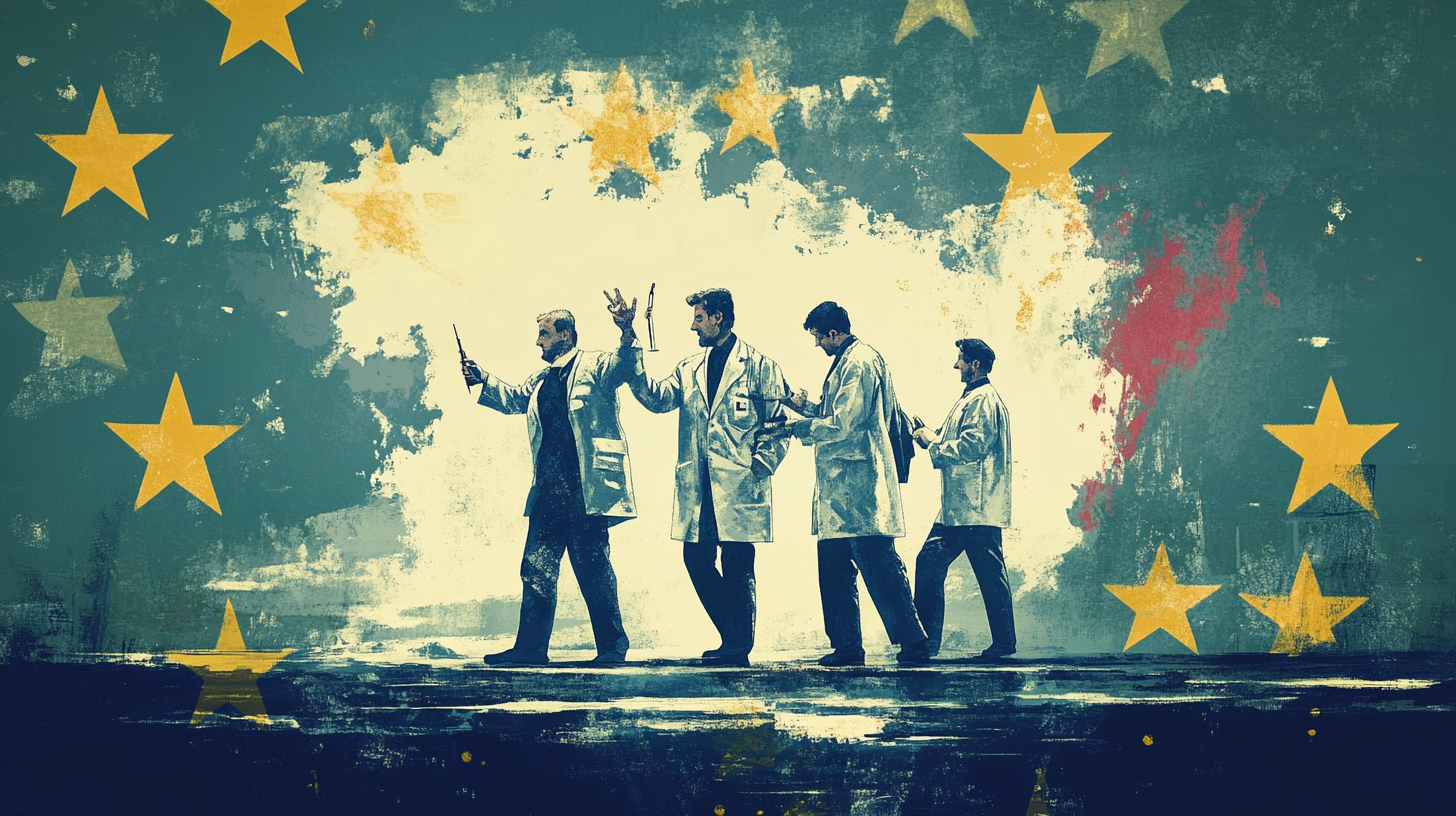
As we look to the future, it’s clear that we need a more balanced, nuanced approach to technological regulation. We must move beyond the false dichotomy of unfettered progress versus heavy-handed control. Instead, we need adaptive regulatory frameworks that can evolve as quickly as the technologies they govern, fostering innovation while safeguarding core societal values. This is where technologies like GRIDNET OS become not just relevant, but crucial. The need for decentralized, user-centric digital infrastructure has never been more pressing. GRIDNET OS, with its promise of true data ownership, borderless collaboration, and resistance to centralized control, represents more than just a technological innovation – it embodies a philosophical shift in how we conceive of digital governance. Imagine a future where your personal data truly belongs to you, where your communications are inherently private, where innovation flows freely across borders, unconstrained by regional regulations. Picture a world where advanced AI models, breakthrough genetic research, and cutting-edge quantum algorithms are developed collaboratively on a global scale, their benefits immediately accessible to all of humanity. This is the potential that systems like GRIDNET OS offer us.

But realizing this vision will require more than just technological development. It demands a collective reevaluation of our priorities as a global society. We must:
- Embrace a model of global digital citizenship that transcends national boundaries.
- Invest heavily in improving scientific and digital literacy at all levels of society.
- Foster ongoing, open dialogue between technologists, policymakers, ethicists, and the public.
- Support the development and adoption of decentralized technologies that align with our values of privacy, freedom, and individual empowerment.
- The imminent need for technologies like GRIDNET OS cannot be overstated. As centralized control tightens and innovation suffocates under the weight of well-meaning but misguided regulations, these decentralized systems offer a lifeline – a path to a digital future that is both innovative and aligned with our highest values.
We stand on the brink of a new digital era. The choices we make now will echo through generations. Will we allow fear and short-term thinking to constrain our potential? Or will we embrace the promise of decentralized technologies, fostering a digital renaissance that empowers individuals, accelerates innovation, and helps us tackle the existential challenges facing our species? The path forward is clear, though not easy. We must be bold in our vision, yet thoughtful in our approach. We must champion innovation while remaining true to our core values. And above all, we must recognize that our digital future is not something that happens to us – it’s something we actively create, through our choices, our policies, and the technologies we choose to develop and adopt. As we close this chapter, let us commit to building a digital future that reflects the best of human ingenuity and aspiration. A future where GRIDNET OS and similar technologies flourish, ushering in an era of unprecedented creativity, collaboration, and human flourishing. The tools are within our grasp. The vision is before us. Now, it falls to each of us – innovators, policymakers, and citizens alike – to turn this vision into reality.
The digital frontier beckons. Let us step forward with courage, wisdom, and an unwavering commitment to shaping a future that benefits all of humanity. The time for decentralized, empowering technologies is not just coming – it is here. The future is decentralized. The future is now. Let us embrace it.
At the Digital Crossroads
In silicon valleys and Brussels’ halls,
A battle rages behind coded walls.
Regulations rise like iron curtains,
While innovation’s light grows uncertain.OpenAI’s voice, silenced by decree,
Durov in chains, for daring to be free.
Nobel minds plead for progress unbound,
Their cries for reason lost in red tape’s sound.But lo! From the digital ether springs
A new hope, on decentralized wings.
GRIDNET rises, a borderless dream,
Where data flows in a democratic stream.No central power to bend or to break,
Each user with a voice and a stake.
From cancer’s cure to climate’s last stand,
Solutions unfettered by a single hand.Yet in this freedom, a question burns bright:
How to balance our power and right?
To innovate freely, yet harm none,
A digital social contract just begun.Humanity stands at the crossroads of fate,
To stagnate in fear or to innovate.
The choice is ours, as code becomes law,
To shape a future we’ve never seen before.Will we cling to the shores of the known,
Or sail to horizons yet unshown?
In bits and qubits, our destiny lies,
A decentralized path to touch the skies.So let us embrace this digital dawn,
Where old boundaries are redrawn.
For in this brave new world we create,
We hold the keys to humanity’s fate.


